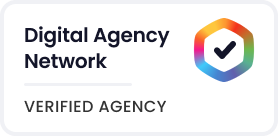What’s an RFP?
Ah, the dreaded RFP—Request for Proposal. It sounds official, maybe even a little exciting. But let’s be real: it often translates to “Please Spend Hours Crafting a Detailed Plan for Us—For Free.” Whether it’s for graphic design, marketing, video production, or even architecture, an RFP usually means a lot of work with little guarantee of reward. So why do we keep falling for it? Let’s dive in.
Why R.F.P. = R.I.P. (for Your Sanity)
An old colleague once told me, “RFP is just code for RIP.” And they weren’t wrong. RFPs can be frustrating, especially when you don’t know who else is bidding, the budget is a mystery, and the criteria are vague (at best). And let’s be honest: nothing says “fun” like pouring hours into a proposal that may end up in someone’s spam folder.
Here at Splat, we’ve seen it all—countless RFPs that left us clicking “send” and crossing our fingers. But rather than let these experiences make us bitter, we’ve turned them into a cautionary tale. Grab your popcorn, folks, because we’re breaking down why the RFP process needs an upgrade, stat!
RFP Problem #1: “What’s the Budget?” – The Eternal Mystery
If we had a dollar for every time an RFP didn’t include a budget, well, we wouldn’t need RFPs. It’s like asking someone to build you a house but refusing to say whether you’re looking for a studio apartment or a 15-room mansion. And yet, clients expect us to offer a detailed, itemized plan—without any hint of the price range they have in mind. It’s like playing poker, except you’re blindfolded and using Monopoly money.
Our advice: Just tell us the budget! We promise we won’t always aim for the max; we want a fair shot at tailoring our services to fit your needs. If you want an agency’s best, help us help you by being transparent. It’s not rocket science—unless you’re literally issuing an RFP for rocket design.
RFP Problem #2: The Mystery Competitors
Wouldn’t it be nice to know who else is bidding? Imagine if football teams didn’t know who they were playing against until game day. They’d be stuck planning a generic strategy that wouldn’t play to their strengths. The same thing happens when we respond to an RFP. We’re flying blind, unable to differentiate ourselves from the competition because we don’t know who the competition is!
If you’re issuing an RFP, consider giving agencies a bit more context. Knowing who’s in the game can actually elevate the quality of proposals you receive. Without this info, we’re stuck serving up a lukewarm buffet instead of our best dish.
RFP Problem #3: Forced, Unproductive Workflows
Picture this: you’re a small design studio, and the RFP asks for “four distinct design concepts.” Why four? Why not one, or even two, really polished ones? Most small agencies run lean and mean, with teams of one or two creatives. Forcing us to churn out multiple concepts just means dividing our energy—and that means you’re not getting our best work.
Instead of asking for a pile of generic concepts, let agencies focus their creativity and effort on one strong, cohesive vision. It’s like choosing the best cake flavor at a bakery—one beautifully crafted cake will always beat four random cupcakes smashed together.
RFP Problem #4: It’s 2024, Not 1994—Show Us Digital Flexibility
Static layouts and rigid design concepts might’ve worked when websites were about as interactive as a brick, but today’s digital world is dynamic. Agencies need room to showcase their talents with working mockups, interactive elements, and live demos. But when RFPs insist on rigid presentation formats, it’s like asking a chef to only show you pictures of their food instead of tasting it. You’re missing out on the best part!
If you’re serious about finding a digital partner, give agencies the flexibility to present their work in ways that reflect their strengths. Trust us, it’ll be worth it.
The RFP Revolution: How to Make it Fair
Look, we get it. The RFP process has its place. But if you want to attract top agencies and get their best work, make the process less lopsided. Here’s how:
- Pre-vet agencies before reaching out — your “short list” should be created before you release the RFP. Truly visionary marketers even conduct introductory interviews before releasing their RFPs.
- Share a budget range — no more guessing games.
- Tell us who else is competing — transparency goes a long way.
- Let agencies choose how they present — embrace modern, interactive proposals.
RFPs should be about starting a conversation, not issuing a set of demands. Let’s make the RFP a partnership opportunity, not a competitive gauntlet. After all, we’re all in this for the same thing: great work that makes everyone look good.
And if that doesn’t work? Well, you’ll find us over here, happily ignoring the next RFP email that lands in our inbox. Cheers to that!



 Do You Copy That?
Do You Copy That?


